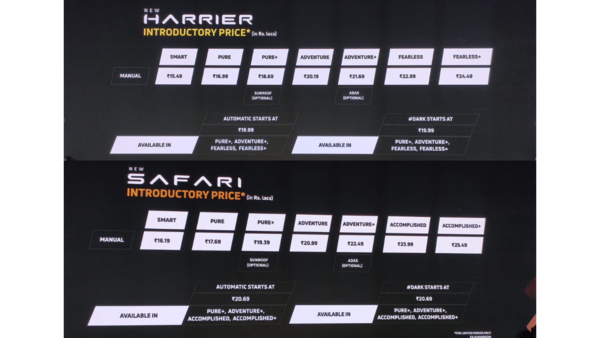New Tata Safari Review: Massively better but not the real Safari yet | TOI Auto
The changes on the outside include a new front fascia, unique for both Safari and Harrier, redesigned split headlamps with LED DRLs spanning across the width of the bonnet and a sportier bumper. The rear-end now gets full-width LED tail lights, new bumper as well as a new faux skid plate. Both mid-size SUVs are now equipped with new alloy wheels with sizes going up to 18-inches for Harrier and 19-inches for Safari facelift.
On the inside, the new Harrier and Safari facelifts are equipped with a new four-spoke steering wheel with an illuminated logo – similar to what we first saw on the new Nexon, a bigger 12.3-inch touchscreen infotainment system, a 10.25-inch digital driver’s display, touch-operated climate control panel, an ambient lighting strip running across the width of the dashboard.

Equipment on offer includes dual-zone automatic climate control, gesture-controlled powered tailgate, wireless charger, electrically adjustable and ventilated front seats (ventilated second row as well for the six-seater Safari), a panoramic sunroof, cruise control, ADAS safety tech, up to seven airbags, ESP, 360-degree camera and so on. Moreover, the new Harrier and Safari have both achieved a perfect five-star safety rating as per Global NCAP’s crash test.
Both the new Safari and Harrier facelifts are now also equipped with a new electric power steering which should result in a lighter and easier steering operation. That said, no changes have been made to the powertrain. Both the SUVs continue to be offered with the same 2.0-litre four-cylinder diesel engine producing 168 hp power and 350 Nm torque. Transmission options include a 6-speed manual gearbox and an optional 6-speed AT with standard front-wheel drive.

